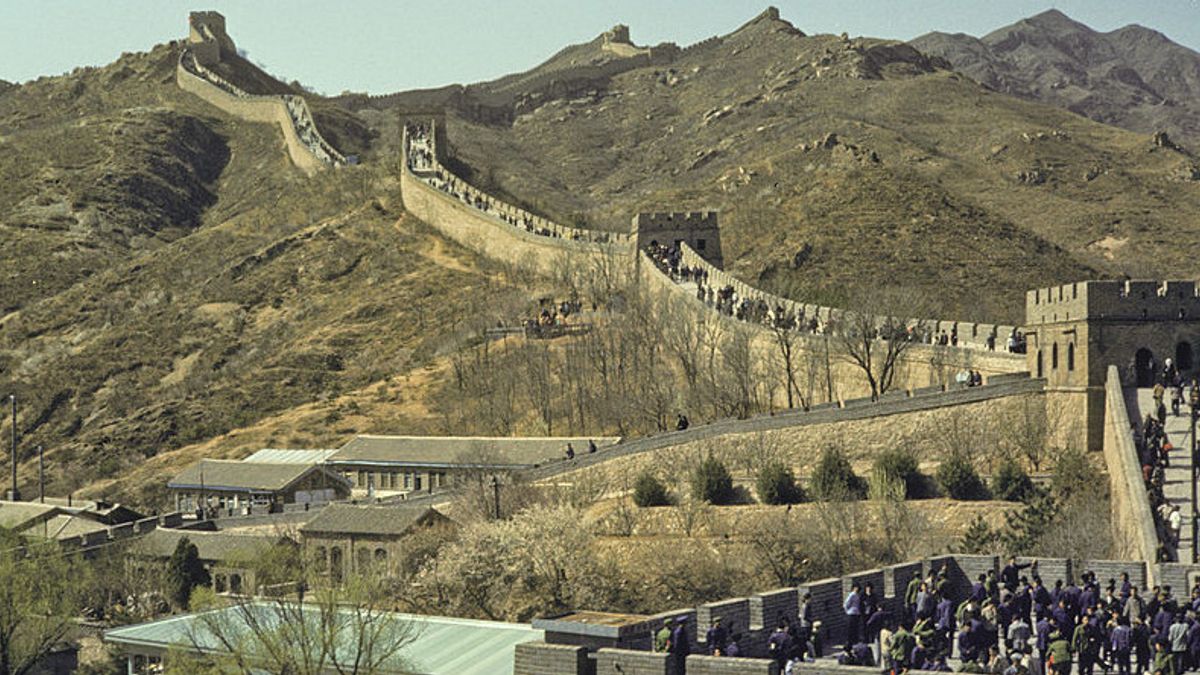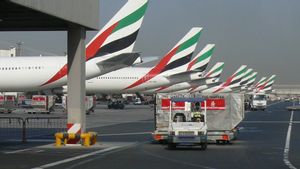JAKARTA - The Great Wall of China is often referred to as the only man-made object visible from outer space. Other facts regarding the Great Wall of China are still in question. The purpose of building the Great Wall of China, for example. Or, where is the end of the Great Wall of China. Here comes the long history of the Great Wall of China.
Regarding the appearance of the Great Wall of China from outer space, through its official website, NASA explained, in fact it is very difficult to distinguish the Great Wall of China from other objects in astronaut photography. The reason is that the materials used in the Chinese Wall have a color and texture similar to the color of the soil that surrounds the wall.
Whether the Wall of China is visible or not from space does not diminish its might. The Great Wall of China is still an ancient fortress with a length of more than 20 thousand kilometers, making it the longest wall in the world. Located in North China, the Great Wall of China is the most recognizable symbol of China and one of the UNESCO world heritage sites.
Not only the size. The Great Wall of China also has a long history. Launching History, Thursday, June 25, the Great Wall of China was originally built by Emperor Qin Shi Huang in the 3rd century BC. The Great Wall of China was built as a means of preventing attacks from savage nomadic societies.
The most famous and best-preserved sections of the Great Wall were built in the 14th to 17th centuries AD, under the rule of the Ming Dynasty. Although the Great Wall never effectively prevented invaders from entering China, it served as a symbol of the enduring power of Chinese civilization.
Made with mostly dirt and rock, the wall stretches from the port of the Shanhaiguan Sea in the China Sea for more than 4.8 kilometers to the west, namely Gansu Province. In some strategic areas, sections of the walls overlap for maximum safety.

As Qin Shi Huang died and the Qin Dynasty fell, many parts of the Great Wall of China were damaged. After the fall of the later Han Dynasty, a series of other nations on the border seized control of North China. The most powerful was the Northern Wei Dynasty, which repaired and expanded the walls to defend against attacks from border nations.
The Bei Qi Kingdom (550-577) built and repaired more than 1,448 kilometers of walls. Meanwhile, the short-lived Sui Dynasty (581–618) repaired and extended the Great Wall several times.
With the fall of Sui and the rise of the Tang Dynasty, the Great Wall lost its role as a fortress. This was because China defeated the Tujue Nation in the north and expanded power to the original, walled borders.
During the Song Dynasty, China was forced to withdraw under threat from the Liao and Jin people to the north, who took over large areas on both sides of the Great Wall. The powerful Yuan (Mongol) dynasty (1206-1368), founded by Genghis Khan, eventually controlled all of China as well as parts of Asia and parts of Europe.
Although the Great Wall was not so important to the Mongols as a military fortress, troops were still tasked with protecting it. The wall was used to protect traders traveling along the Silk Route trade routes.
The form of the Great Wall as it is known today began around 1474. After the initial phase of territorial expansion, the Ming rulers took a defensive and reformed stance with the expansion of the Great Wall.
The Great Wall by Ming extends from the Yalu River in Liaoning Province to the eastern bank of the Taolai River in Gansu Province, and winds east to west through Liaoning, Hebei, Tianjin, Beijing, Inner Mongolia, Shanxi, Ningxia and Gansu.
Over the years, many roads were cut in order to traverse the walls at various points. In addition, many parts of the wall have deteriorated after centuries of neglect. The most famous part of the Great Wall of China that tourists frequent is the Badaling area, located 70 kilometers northwest of Beijing, which was reconstructed in the late 1950s.
The English, Chinese, Japanese, Arabic, and French versions are automatically generated by the AI. So there may still be inaccuracies in translating, please always see Indonesian as our main language. (system supported by DigitalSiber.id)













